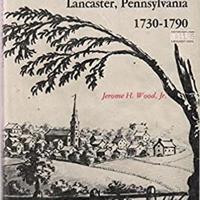Dear Dr. Scribblerbooks:
Have you ever published a top 10 book article on Lancaster County events? I would be curious to see this list.
Roger Rutt
Smoketown
Dear Roger:
No, the Scribbler has never published such a list, but it’s a great way to get books talked about in August.
It is difficult to compile a proper list of just 10 books. But the Scribbler recommends two general histories, three histories of specific eras, and four studies of violent events. Add as desired.
Franklin Ellis and Samuel Evans published the most comprehensive “History of Lancaster County, Pennsylvania” in 1883. The book covers the county as a whole and also includes detailed histories of each municipality. It has been reprinted several times.
“Lancaster County Since 1841,” a considerably thinner history, covers the years until its publication in 1941. Frederic S. Klein, professor of history at Franklin & Marshall College, wrote the book to mark the centennial of Lancaster County National Bank.
John WW ‘Jack’ Loose published the lavishly illustrated ‘The Heritage of Lancaster’ in 1978 when he was President of the County Historical Society. The book is considerably more readable than Ellis and Evans. No significant history of the county has been published since Loose’s work.
Jerome H. Wood Jr. published “Conestoga Crossroads: Lancaster, Pennsylvania 1730-1790” in 1979. A professor at Swarthmore College, Wood had a knack for finding detail in the wide range of 18th century history. This is an engagingly written scholarly tome.
Perhaps the most obscure book on this list – “Of a Place and a Time: Remembering Lancaster” by Richard D. Altick – is an “informal memoir” of the town of Lancaster between the two world wars. This is an offbeat book from a scholar of Victorian literature who grew up here in the 1920s and 1930s and taught at F&M during World War II.
David Schuyler, who has spent most of his life teaching at F&M, published “A City Transformed: Redevelopment, Race, and Suburbanization in Lancaster, Pennsylvania – 1940-1980” in 2002. This is a guide solid on what went right and (more so) what went wrong during the city’s first period of redevelopment.
“Massacre of the Conestogas” (2010) by Jack Brubaker is the first book to focus exclusively on the Paxton Boys’ murder of the last group of peaceful Indians living in Lancaster County. The book targets the preachers and politicians who allowed the Paxton Boys to kill 20 old men, women and children without penalty in 1763.
“Bloody Dawn: The Christiana Riot and Racial Violence in the Antebellum North” (1991) by Thomas P. Slaughter is the best book on the radical resistance to slave owners in Christiana in 1851. Slaughter examines the event as a catalyst for the Civil War, but also places Christiana in the context of other violent racial events in the nation’s history.
“Amish Grace: How Forgiveness Transcended Tragedy” (2007) by Donald B. Kraybill, Steven M. Nolt and David L. Weaver-Zercher is the most thoughtful treatment of the murder of five Amish school girls in Nickel Mines in 2006 .
The last book is in a class of its own. “A Murder in Paradise” (1954) is not about a major violent event, but about the murder of an F&M secretary by F&M student Edward Gibbs. Local author Richard Gehman dissected the murder in detail, providing a sordid slice of Lancaster’s life, circa 1950.
Retired LNP staff Jack Brubaker writes “The Scribbler” column every Sunday. He welcomes comments and contributions at scribblerlnp@gmail.com.

